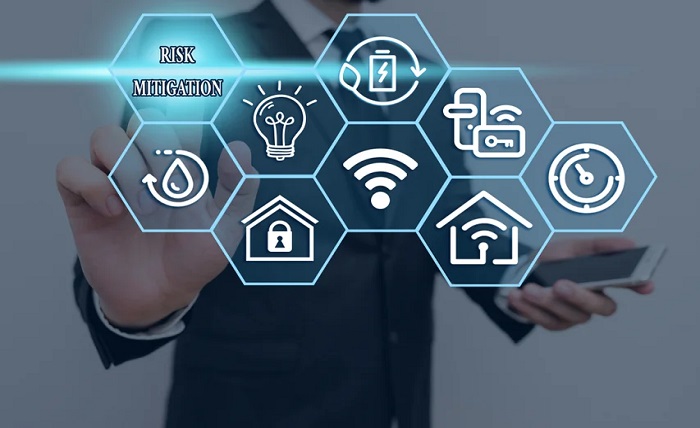How to Identify and Mitigate Risk in Cybersecurity

Cybersecurity risk mitigation is a vital element of any cybersecurity strategy. It is because new threat actors are entering the landscape at a rapid pace, requiring organizations to stay proactive to detect & respond to threats quickly.
The primary way to do this is by assessing the risk, identifying the threat, and mitigating it to an acceptable level. It is a complex process that requires expertise from various departments, partners, or companies.
Assess the Risk
What is risk in cybersecurity entail? Businesses can assess their systems’ level of trouble with cybersecurity risk. It considers the likelihood of a security event & how serious it would be.
It is a crucial step for any company, especially in an environment with constant cyberattacks. It also helps organizations prioritize where to invest their resources & prevent future attacks.
Risk assessment is a continuous process that identifies threats to sensitive data and the vulnerabilities that could lead to these attacks. It involves assessing the potential impact of a threat to your assets, operations, and customers.
A cybersecurity risk assessment is a multi-phase process that requires considerable planning and specialist knowledge to cover people adequately process- and technology-based vulnerabilities. It also involves stakeholder buy-in to account for risks properly.
The first phase of a cybersecurity risk assessment involves identifying the organization’s most valuable assets and determining how a security incident could impact those assets. It also enables businesses to calculate the financial cost of protecting their data and infrastructure.
After completing the identification phase of the cybersecurity risk assessment, the next step is to evaluate the current level of security controls that are in place. It can be done through technical means such as software or hardware solutions, intrusion detection mechanisms, automatic updates, two-factor authentication, and encryption or through nontechnical means like security policy and physical access controls.
Identify the Threat
Cybersecurity threats can devastate people, businesses, communities, and countries. They can cause identity theft, loss of personal data, or disruption of services.
The first step is to identify the threat. It is done by examining all potential vulnerabilities and risks in your network and systems.
Once you’ve identified your threats, you must decide how to protect yourself against them. The best way to do this is to create a cyber security culture. It means developing technology, policies, and processes built with security.
In addition, you should ensure your IT systems are up to date and that you’re following patch management procedures to protect them from vulnerabilities.
Another essential part of identifying your cybersecurity risk is to assess the likelihood of each possible attack happening and what impact it would have if it did happen. It is done by considering the value of information that might be lost, the vulnerability to the attack, and its impact on your business or reputation.
Malware, ransomware, and phishing are the most prevalent cybersecurity threats. These are malicious software that hackers and cyber criminals use to steal personal data, disrupt networks or cause other problems.
Detect the Threat
Cyber threats are a reality, and knowing how to detect them is essential. It will allow you to take preventative measures and mitigate the risk before it becomes a severe issue for your organization.
The first step in detecting a threat is identifying the attack type. Some attacks target computers and systems, while others focus on people’s personal information.
Analyzing data breaches and security incidents is an excellent way to detect these threats. These incidents are usually caused by hackers accessing a company’s database.
These attacks can steal customer information and financial data. They can also damage a company’s reputation.
Another type of attack is called “malware.” The software can infect a computer or network and cause severe organizational problems. These programs include viruses, Trojans, spyware, and worms.
You should install antivirus mechanisms to protect your company from malware and other threats. These programs can detect malicious email attachments and phishing emails.
Unified endpoint behavior analytics (UEBA) to detect advanced threats is best. These tools compare user and device behavior to baselines to identify anomalous activity such as file uploads, remote logins, or database activities.
UEBA is a vital component of any successful cybersecurity strategy. The tool helps you monitor for the latest threats and alerts you if one is detected.
Mitigate the Threat
Cybersecurity risk mitigation is a critical part of any cybersecurity strategy. It enables businesses to understand their vulnerabilities better and mitigate the damage of cyberattacks.
Successful organizations understand that a cybersecurity breach can cause significant damage to their operations and reputations, costing them money and valuable customer data. They make threat mitigation a key component of their digital transformation strategy.
The first step in risk mitigation is determining the threats relevant to your business. To do this, you must identify all assets that malicious hackers could compromise.
Assets include everything from computers to networks and other systems to physical buildings. They also have employee accounts and personal information, such as social security numbers.
Once you have identified all possible threats, evaluating how likely they are to occur and their impact on your organization is essential. It is known as a risk assessment.
The step in the risk reduction procedure that is most crucial is this one. It lets your team document potential risks and consequences, such as regulatory fines or stolen customer data.
Cybersecurity is a complex problem requiring multifaceted approaches to protect your business. These approaches include technical and nontechnical controls, incident response planning, and monitoring.




